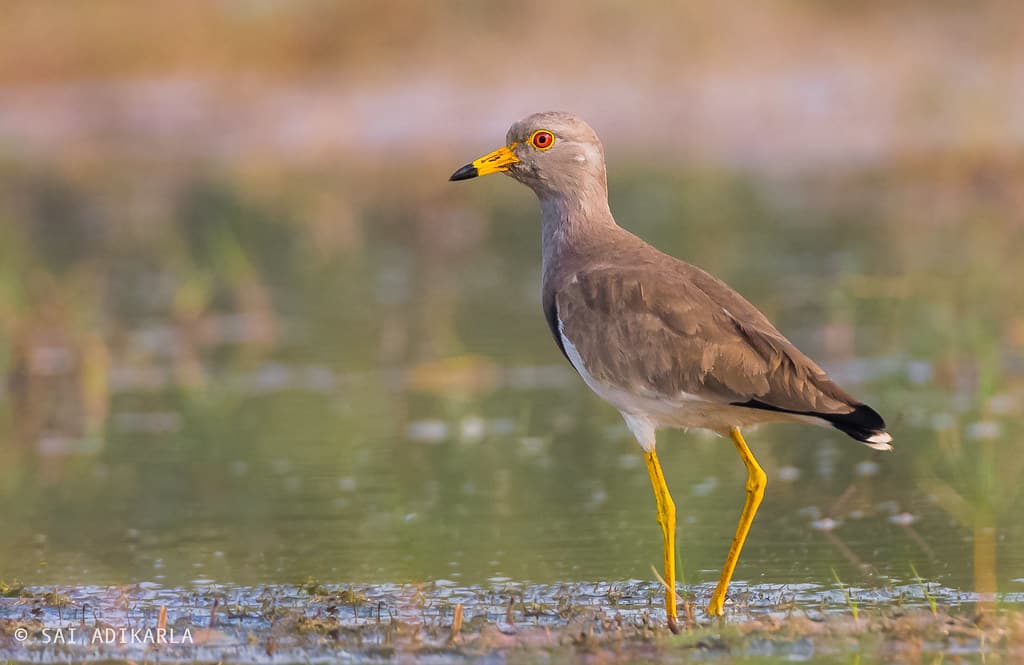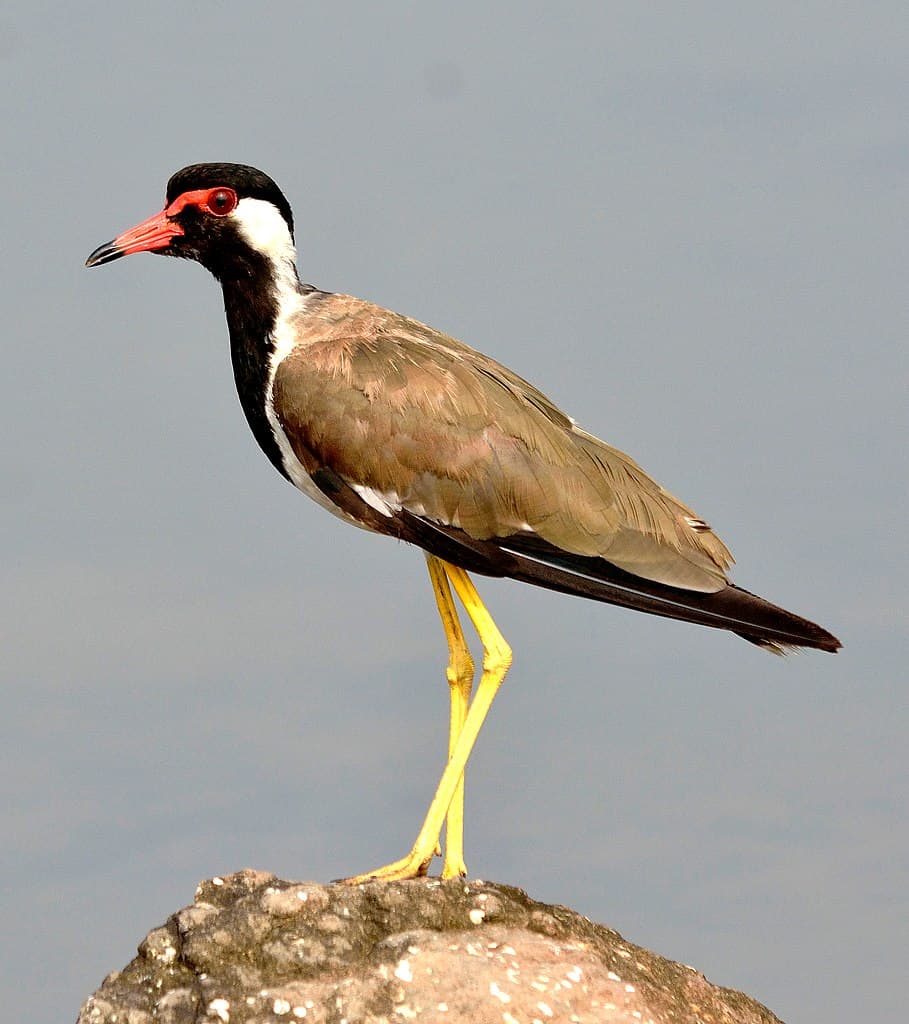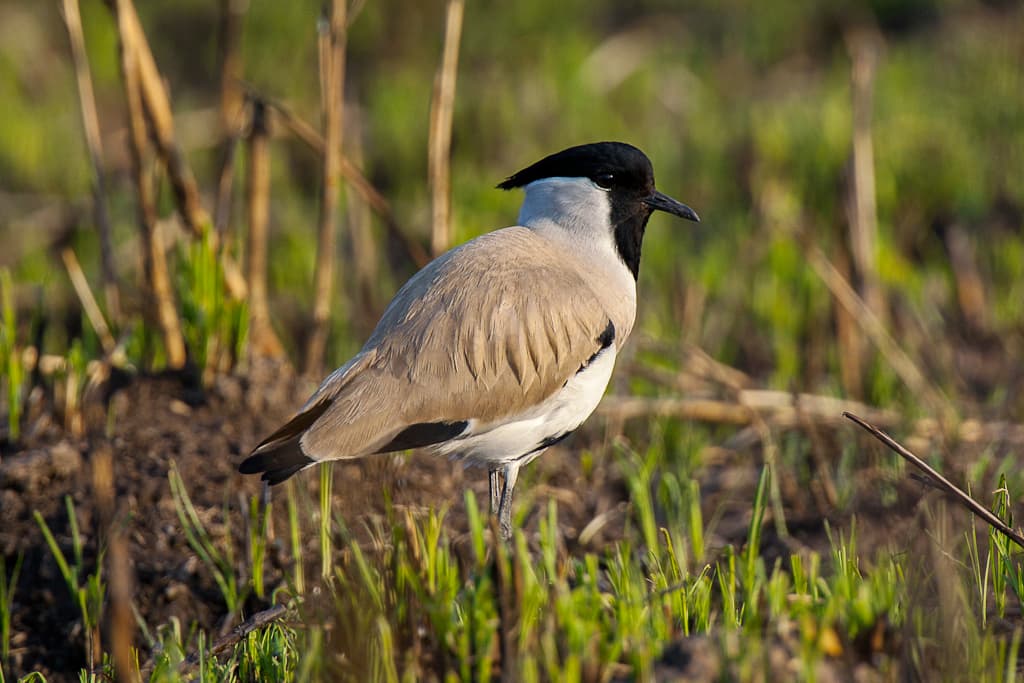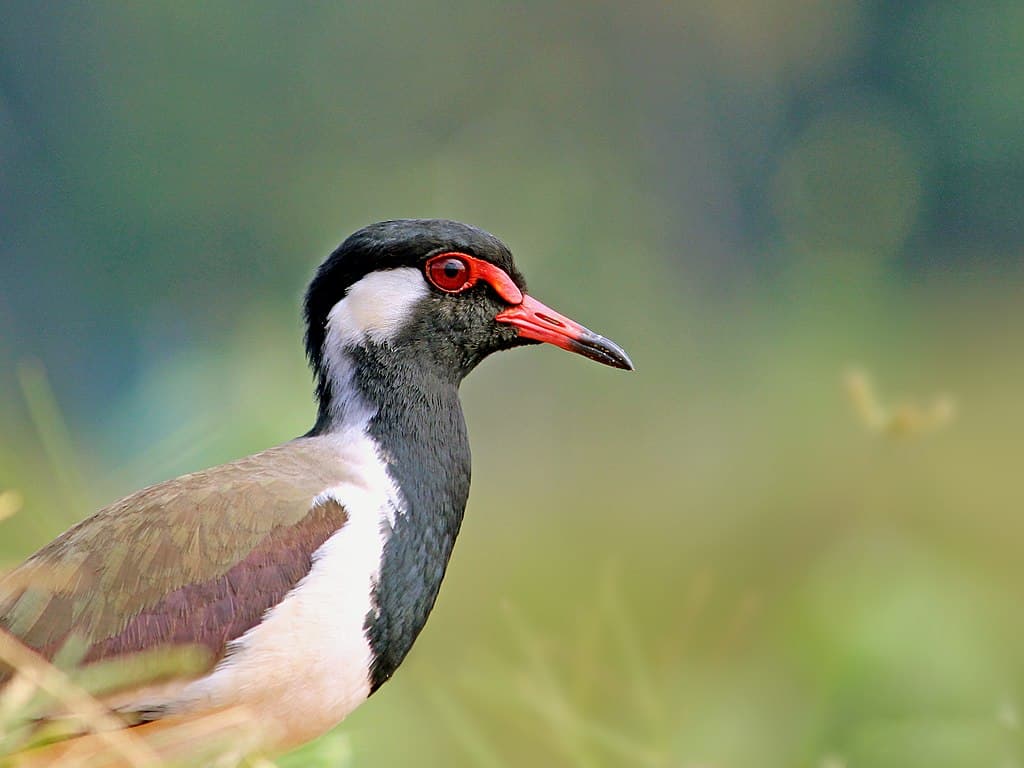Lapwings are ground-nesting birds that are notable for many characteristics, and they are very interesting birds. Do you know that lapwings are ground birds and they are incapable of perching? This is just one of the interesting facts about them, there are many more. Currently, we have 3 lapwing species in Cambodia among 25 species in the world. Let’s take a look and see all of them with me below.
Gray-Headed Lapwing (ត្រដេវិចក្បាលប្រផេះ)

The gray-headed lapwing is a medium-sized bird that stands 34 to 37 centimeters tall. It has a brown back, dark gray breast, and white belly along with a gray head and neck. This bird also has white cheeks and throats with black stripes on its crown and a black breast band. The wings of these birds are brown with white spots on the tips while the pointy long tail has white edges.
Gray-headed lapwings are common in Australia, English, New South Wales, Russia, Southeast Asia, Sri Lanka, and Sweden. During the breeding season, these birds nest in marsh edges, rice fields, and wet grasslands from April to July. Their diet consists of amphibians, insects, mollusks, small reptiles, worms, and some plant materials that they can find in shallow water. These birds are monogamous and highly territorial, and they neighbor two or more breeding pairs to form a defensive flock.
This flock is very protective of each other, the pairs will drive away the intruder when one is spotted in the territories. These birds will make alarm calls and fly in circles over the intruder before launching an attack. They will try their best to keep the predators away to ensure that the nests are safe.
Red-Wattled Lapwing (ត្រដេវិចទួល)

Standing around 35 centimeters tall, this wading bird is one of a kind when it comes to appearance. A red-wattled lapwing a black head with a black bib on the front and back of the neck. The distinctive part is the white patch that runs in the middle of the body from the belly to each side of the face. This lapwing species got its name from the reddish fleshy wattle in front of each of its eyes. The coloration of the red-wattled lapwings is absolutely gorgeous, especially when they spread their wings. Their wings and back are light brown with a purple to green sheen with a white part.
Red-wattled lapwings have a distribution across South Asia, Southeast Asia, and West Asia where they breed and migrate. These birds mostly inhabit forests but also corn fields, cultivated lands, fallow agricultural fields, grass fields, pasturelands, and rural gardens. Some can also be found in flooded grasslands, freshwater habitats, montane plains and ravines, open forests, and wetlands. Within their habitats and range, this lapwing species feeds on insects, invertebrates, and snails that they pick from the ground.
The fascinating part is that they have very few predators because of the unpleasant taste of their flesh. Falcons and hawks are the main predators that will pursue them though sometimes unsuccessful due to their agile flight. For ground predators, could be the tiger though one report mentioned that a hungry tiger cub refused to eat the bird’s meat.
River Lapwing (ត្រដេវិចទន្លេ)

River lapwings grow from 29 to 32 centimeters tall, making them the smallest among the 3 lapwing species in Cambodia. A river lapwing has a black crest, crown, face, and central throat while the nape and neck sides are gray white. It also has a gray-brown breast band and white underparts with a black belly patch. The extensive crest of these birds is probably the most interesting feature that it raises every now and then.
The river lapwings have a wide range across the Indian Subcontinent to Southeast Asia. Their common habitats include creeks, permanent freshwater lakes, river islands, sandbanks and shingle banks, slow-moving rivers with gravel bars or sand, and wetlands. In those areas, they feed on crustaceans, insects and their larvae, mollusks, small fish, tadpoles, and worms. Unfortunately, river lapwings are classified as Vulnerable on the IUCN Red List due to many threats. They are facing habitat degradation, habitat loss, and hunting pressure while their eggs are being collected by humans. Draining of wetlands and flooding of nest sites also play a part, and their survival is at stake.
Related Post: Jacana Species In Cambodia
